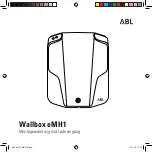
1A-15 Engine General Information and Diagnosis:
Step 2: DTC(s) Check, Record and Clearance
First, check DTC (including pending DTC), referring to
“DTC Check”. If DTC is indicated, print or write it down
and then clear it by referring to “DTC Clearance”. DTC
indicates malfunction that occurred in the system but
does not indicate whether it exists now or it occurred in
the past and the normal condition has been restored
now. To check which case applies, check the symptom in
question according to Step 5 and recheck DTC
according to Step 6 and 7.
Attempt to diagnose a trouble based on DTC in this step
only or failure to clear the DTC in this step will lead to
incorrect diagnosis, trouble diagnosis of a normal circuit
or difficulty in troubleshooting.
NOTE
If only immobilizer DTC(s) (P1620 to P1623) is
indicated in this step, perform trouble
diagnosis according to “DTC Table” (for
immobilizer).
Step 3 and 4: Visual Inspection
As a preliminary step, be sure to perform visual check of
the items that support proper function of the engine
referring to “Visual Inspection”.
Step 5: Trouble Symptom Confirmation
Based on information obtained in Step 1 Customer
complaint analysis and Step 2 DTC(s) check, confirm
trouble symptoms. Also, reconfirm DTC according to
“DTC Confirmation Procedure” described in each DTC
flow.
Step 6 and 7: Rechecking and Record of DTC
Refer to “DTC Check” for checking procedure.
Step 8: Engine Basic Inspection and Engine
Symptom Diagnosis
Perform basic engine check according to the “Engine
Basic Inspection” first. When the end of the flow has
been reached, check the parts of the system suspected
as a possible cause referring to “Engine Symptom
Diagnosis” and based on symptoms appearing on the
vehicle (symptoms obtained through steps of customer
complaint analysis, trouble symptom confirmation and/or
basic engine check) and repair or replace faulty parts, if
any.
Step 9: Troubleshooting for DTC (See each DTC
Diag. Flow)
Based on the DTC indicated in Step 6 or 7 and referring
to the applicable DTC diag. flow, locate the cause of the
trouble, namely in a sensor, switch, wire harness,
connector, actuator, ECM or other part and repair or
replace faulty parts.
Step 10: Intermittent Problems Check
Check parts where an intermittent trouble is easy to
occur (e.g., wire harness, connector, etc.), referring to
“Intermittent and Poor Connection Inspection in Section
00 in related manual” and related circuit of DTC
recorded in Step 2.
Step 11: Final Confirmation Test
Confirm that the problem symptom has gone and the
engine is free from any abnormal conditions. If what has
been repaired is related to the DTC, clear the DTC once,
perform DTC confirmation procedure and confirm that no
DTC is indicated.
Malfunction Indicator Lamp (MIL) Check
S3RH0B1104002
1) Turn ON ignition switch (but the engine at stop) and
check that MIL (1) lights.
If MIL does not light up (or MIL dims), go to
“Malfunction Indicator Lamp Does Not Come ON at
Ignition Switch ON (But Engine at Stop)” for
troubleshooting.
If MIL flashes, go to “MIL Flashes at Ignition Switch
ON”.
2) Start engine and check that MIL turns OFF.
If MIL remains ON and no DTC is stored in ECM, go
to “Malfunction Indicator Lamp Remains ON after
Engine Starts” for troubleshooting.
DTC Check
S3RH0B1104003
Using SUZUKI Scan Tool
1) Prepare SUZUKI scan tool.
1
I3RH0A110008-01
Summary of Contents for Liana RH418
Page 4: ......
Page 222: ...3A 13 Drive Shaft Axle ...
Page 362: ...5A 136 Automatic Transmission Transaxle ...
Page 370: ...Prepared by 1st Ed Feb 2004 2nd Ed Jul 2006 367 ...
















































